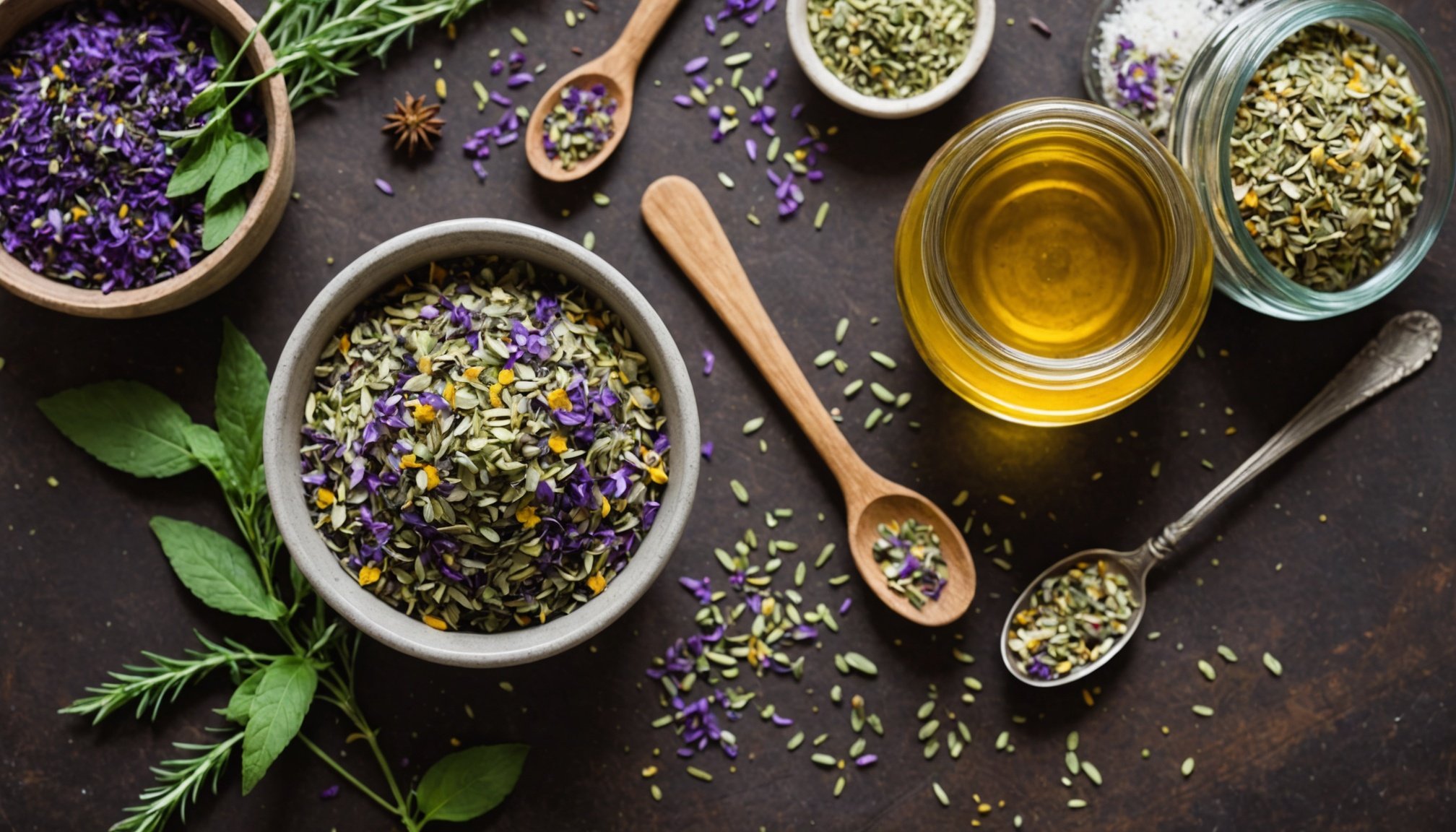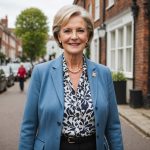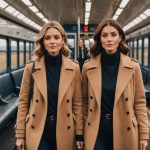Understanding the Benefits of Herbal Bath Soaks
Herbal bath soaks offer numerous benefits for both skin hydration and self-care. Utilizing a combination of essential oils and herbal ingredients, these soaks can significantly improve skin moisture. Ingredients such as chamomile and lavender are particularly effective; they not only hydrate the skin but also enhance its softness and elasticity. Essential oils play a crucial role by penetrating the skin’s deeper layers, promoting both nourishment and rejuvenation.
In addition to skin benefits, herbal bath soaks contribute to emotional and mental relaxation. They establish a soothing ritual that encourages a quiet mind and reduced stress. A relaxing soak can be a powerful self-care practice, enabling individuals to carve out personal time for de-stressing. The aromatic components of herbs like eucalyptus further enhance this calming effect, promoting relaxation through aromatherapy.
This might interest you : Discover the ultimate recipe for luscious lips: make your own organic lip scrub at home!
Beyond their relaxation and skin benefits, herbal bath soaks offer a holistic approach to well-being. Regular use can lead to improved mood and better mental clarity, helping to maintain emotional balance. For those seeking a natural way to rejuvenate both body and mind, incorporating herbal bath soaks into a self-care regimen can provide comprehensive wellness benefits.
Essential Ingredients for Your Custom Herbal Bath Soak
Creating your own bath soak requires a careful selection of natural herbs and essential oils. Understanding these ingredients is crucial for crafting an effective blend.
In parallel : Transform your digestion: easy steps to embrace mindful eating in your daily routine
Types of Herbs to Consider
Selecting the right herbs can enhance the benefits of your bath soak. Lavender is renowned for its calming properties, making it an excellent choice for those looking to unwind. Meanwhile, chamomile provides soothing effects, ideal for sensitive skin. For added respiratory benefits, consider incorporating eucalyptus. Each herb offers unique advantages, contributing not only to skin care but also to overall well-being.
Essential Oils for Skin and Aromatherapy
Choosing the appropriate essential oils is equally important. When selecting oils, consider your skin type: some oils cater to dry skin, while others are better suited for oily or sensitive skin. Popular choices include lavender oil, known for its relaxation properties, and tea tree oil, which offers antibacterial benefits. Always prioritise safety—dilute essential oils appropriately and conduct a patch test to ensure skin compatibility.
Optional Additions for Extra Benefits
To amplify your bath’s effects, consider adding Epsom salts for detoxing, oatmeal for soothing, and milk powder for moisture. These additions can transform your bath soak into a comprehensive self-care experience.
Sourcing Your Ingredients Safely and Sustainably
When creating your own herbal bath soaks, sourcing high-quality and sustainable natural herbs and essential oils is paramount. To ensure safety and effectiveness, start by seeking out reputable suppliers known for ethical practices. This not only supports eco-friendly agriculture but also guarantees the purity and potency of ingredients.
Verify the origins of your ingredients. For herbs, organic certifications can provide assurance of quality. Essential oils should be 100% pure and tested for therapeutic purposes. This helps avoid synthetic additives that could irritate the skin or diminish the bath soak’s efficacy.
Prior to using any herbal ingredients, check for potential allergies. Conducting a patch test is essential to identify skin sensitivities. Apply a small amount of the prepared soak on a discreet patch of skin and observe for any adverse reactions within 24 hours.
Select sustainable options by choosing locally sourced or fair-trade ingredients, reducing your carbon footprint. Eco-friendly packaging, like biodegradable bags or recycled jars, adds to the sustainability of your herbal creations. Prioritising these aspects ensures your bath soak not only nourishes the body but also respects the environment.
Safety Considerations for Herbal Bath Soaks
Ensuring the safe use of herbal bath soaks is crucial to enhance enjoyment while avoiding potential skin issues. Before using a soak, always conduct a patch test. Applying a small amount of the soak on a discreet area of skin helps assess any adverse reactions or allergies that may arise. Observe the test site over 24 hours for irritation or discomfort.
Understanding potential allergic reactions is essential, as some individuals may experience redness, itching, or swelling. Common triggers could be specific herbs or essential oils, necessitating careful selection based on individual skin sensitivities.
To use essential oils safely, they should always be diluted in a carrier before adding them to bathwater. Essential oils are potent, and directly applying them to the skin can cause irritation or burns. Dilution ensures they are properly incorporated into the bathwater, providing therapeutic benefits without harm.
Finally, adhere to recommended dosages and concentrations for bath soaks. Overuse of active ingredients might lead to skin irritation or other health concerns. By following these safety guidelines, you can confidently enjoy the soothing experience of herbal bath soaks while maintaining skin health.
Step-by-Step Guide to Creating Your Herbal Bath Soak
Creating a DIY herbal bath soak is a personalised way to elevate your self-care routine. Start by gathering all necessary materials: a container for mixing, measuring cups, and a few basic bath soak ingredients like natural herbs and essential oils.
Preparation Instructions
-
Measure Ingredients: Begin by measuring your chosen natural herbs into a bowl. Consider calming options like lavender or chamomile for soothing effects.
-
Add Essential Oils: Carefully add drops of essential oils. Always dilute these potent oils in a carrier to prevent skin irritation—this step is crucial for crafting a safe blend.
-
Combine Components: Mix the herbs and oils thoroughly. This ensures an even distribution of fragrance and benefits throughout your bath soak.
-
Packaging and Storage: Store your prepared bath soak in airtight containers to maintain their potency and freshness. Opt for glass jars or eco-friendly packaging, which helps preserve the blend longer.
-
Label and Customize: Consider labelling your bath soaks with the date of creation and ingredients used. This provides clarity and personalisation for future use.
By following these straightforward steps, you can create a custom bath experience that caters specifically to your skin’s needs and preferences.
Customizing Your Bath Soak Experience
Creating a personalized bath soak can elevate your self-care practice, allowing you to tailor it to your specific preferences and needs.
Adjusting to Your Scent Preferences
Balancing fragrances is key to a deeply satisfying soak. Consider combining essential oils like lavender or chamomile to create a calming effect, or use invigorating blends of eucalyptus and peppermint for more vitality. Crafting your blends tailored to mood and desired effects not only enhances your bath but can also contribute significantly to your emotional well-being.
Altering Texture and Appearance
Experiment with colors and textures to enhance both the visual and tactile experience of your bath soak. Natural ingredients such as dried flowers or herbs can add texture and beauty. For those interested in changing colors, consider natural colorants like beetroot powder or turmeric, which provide a gentle, non-synthetic way of altering appearance.
Time and Temperature Considerations
Optimal soaking times can vary depending on skin type. Those with sensitive skin might limit soaking to 10-15 minutes, while dry or resilient skin may enjoy longer durations. Maintaining a water temperature between 37-39°C is generally recommended, providing maximum benefits without causing irritation. Adjust as needed to suit your skin and comfort level.











